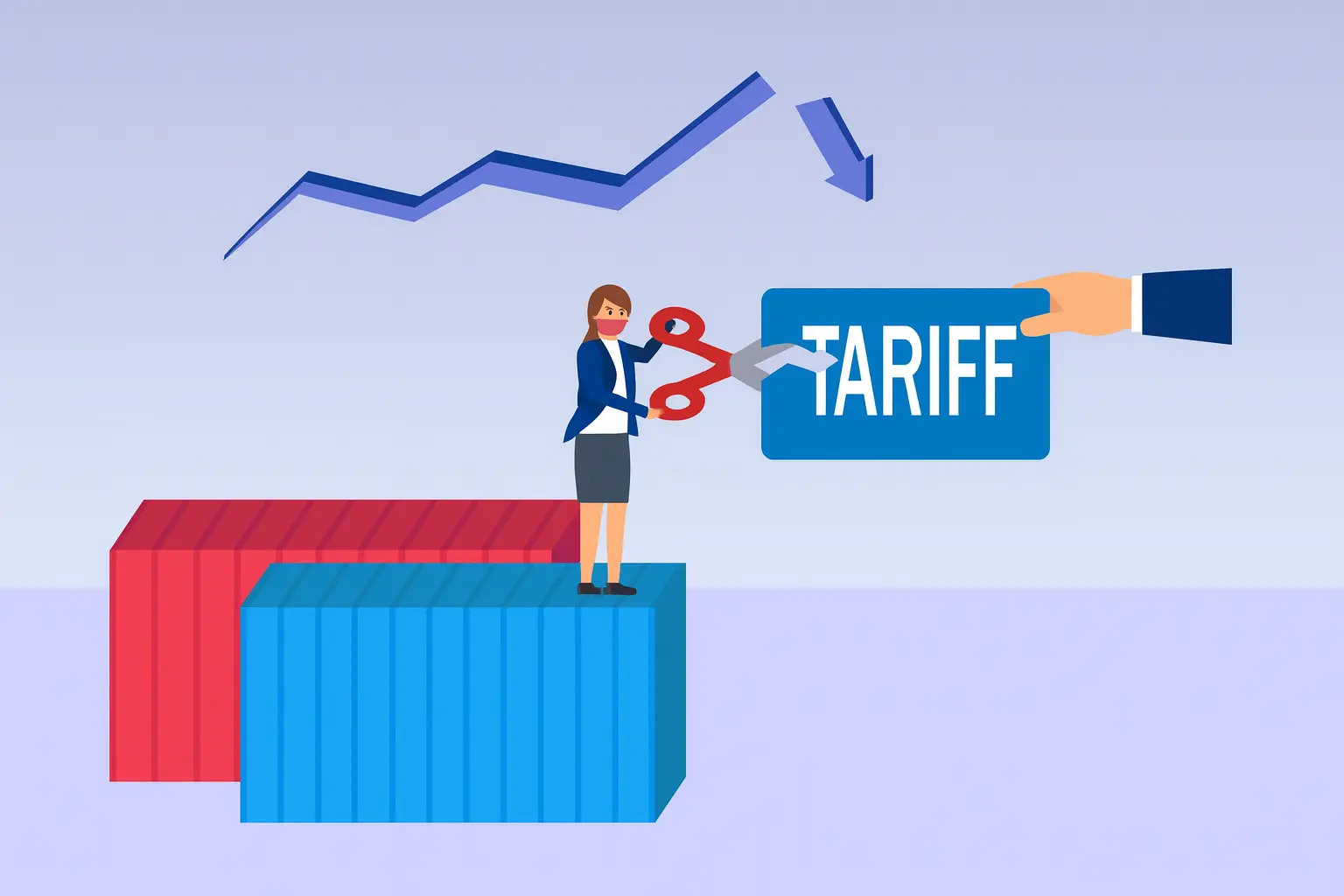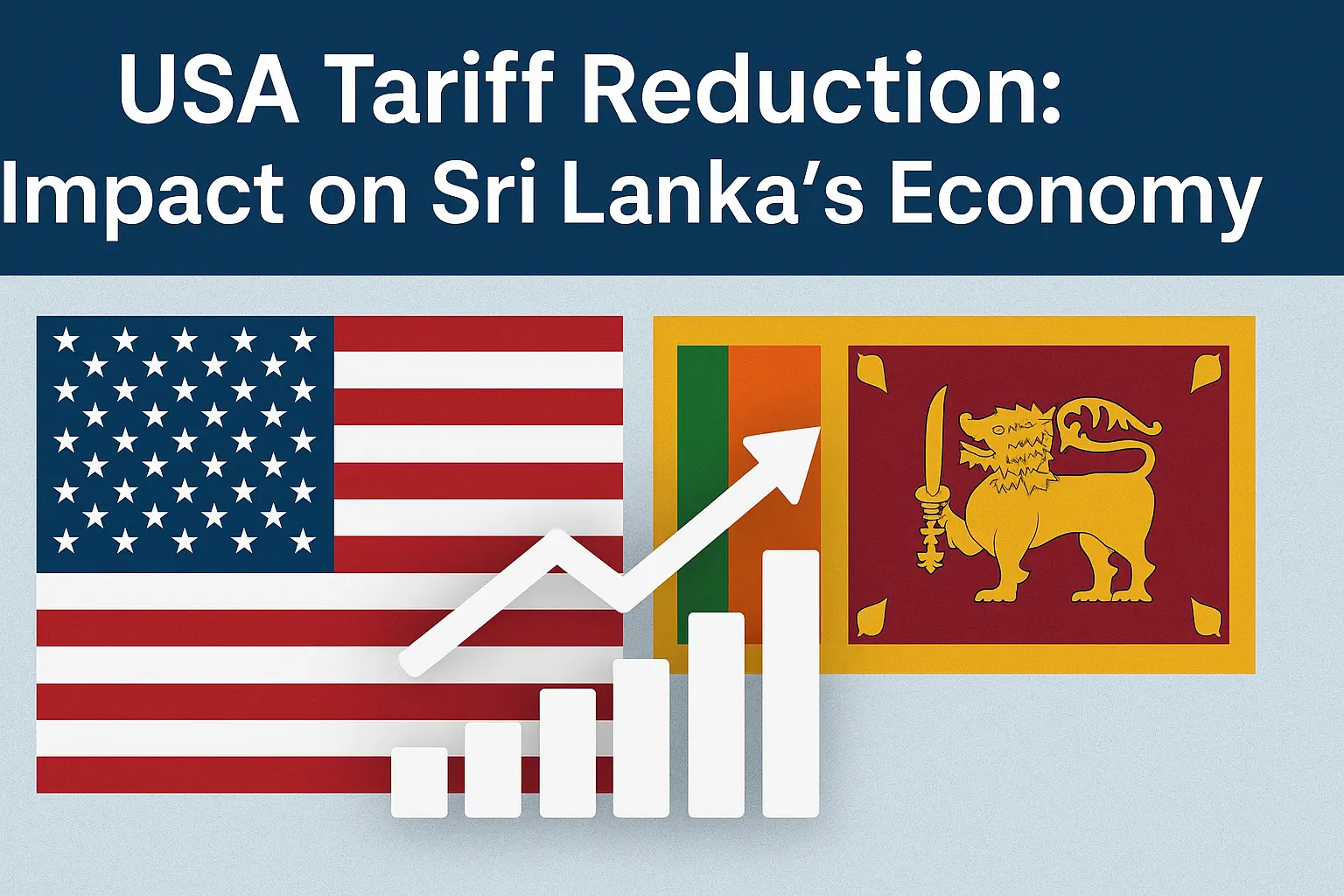Introduction
USA Tariff Reduction | In a major shift poised to reshape global trade, the United States has announced a reduction in tariffs on selected goods from developing countries — Sri Lanka among them. This change signals a welcome opportunity for the island nation, which has long battled trade deficits, low export diversification, and limited access to high-value markets. As Sri Lanka seeks to stabilise its post-crisis economy, the USA tariff reduction could serve as a crucial lever for recovery and sustainable growth.
But what does this move actually mean in practical economic terms? Let’s unpack the implications across trade, investment, and industry.
A Boost to Export Competitiveness
At its core, the tariff reduction improves the price competitiveness of Sri Lankan exports in the U.S. market. For a country whose exports have struggled to keep pace with global trends, this is a game-changer.
Apparel and textiles, Sri Lanka’s top export, will benefit significantly. U.S. buyers, now facing lower landed costs, are more likely to increase orders or shift contracts from other countries to Sri Lanka.
Agricultural products, such as tea, cinnamon, and rubber-based goods, may also see renewed demand if tariff bands are lifted or reduced.Value-added manufacturing, such as electrical components and ceramics, may finally gain a foothold in a market that was previously cost-sensitive.
This enhanced competitiveness could lead to higher export volumes, diversification of buyers, and ultimately, greater foreign exchange inflows.
More Than Just Trade: Investor Confidence
The tariff reduction is not just a win for trade — it sends a broader signal to global investors. At a time when Sri Lanka is courting FDI to revitalise its economy, especially in export-oriented sectors, the U.S. decision acts as a stamp of approval.
International investors often view tariff privileges as a key factor when choosing production locations. A factory in Sri Lanka that can export goods to the U.S. with low or zero tariffs suddenly becomes more attractive than one in a higher-tariff country.
This opens the door for:New investments in apparel factories, especially those focused on quick delivery cycles for U.S. brands.Expansion of specialised agricultural processing plants targeting U.S. retailers.
Growth in BOI-registered export parks geared toward high-volume U.S. orders.
In short, Sri Lanka becomes a more bankable bet for export-led investment.
Opportunities for SME Exporters
Small and medium enterprises (SMEs) often lack the pricing power to absorb high tariffs when exporting. For them, even a modest tariff can be a deal-breaker. The reduction could give SMEs breathing space to:
Expand online and direct-to-consumer (D2C) channels targeting U.S. niche markets.
Partner with local chambers to improve packaging, compliance, and certification for U.S. standards.
Access new financing lines based on stronger export contracts.
This democratisation of trade could catalyse entrepreneurship and regional export hubs across the country.

Job Creation and Industrial Recovery
Export-oriented industries are labour-intensive. In garments, for instance, even a modest increase in orders can translate into thousands of new jobs. Many industrial zones in Sri Lanka have operated below capacity post-COVID and during the economic crisis.
With U.S. demand strengthening, we can expect:
Rehiring and expansion of dormant garment facilities, particularly in provinces like the North Central and Eastern regions.
Revitalisation of export processing zones, with higher utilisation rates and subcontracting demand.
Recruitment drives for skilled workers, quality inspectors, logistics managers, and warehouse teams.
This could alleviate unemployment, especially among youth and women, and inject disposable income into local economies.
Currency and Balance of Payments Impact
Increased exports to the U.S. mean higher dollar inflows, which can ease pressure on Sri Lanka’s foreign reserves and currency. With more exporters earning and repatriating dollars:
The rupee may stabilise, helping reduce import costs and inflationary pressures.
The current account deficit may narrow as export growth outpaces import reliance.
Sri Lanka can better service its external debt, improving sovereign credibility.
While these effects won’t be immediate or uniform, the macroeconomic direction is positive.
A Nudge to Diversify the Export Basket
Historically, Sri Lanka has relied heavily on a few product categories and limited destination markets. The tariff reduction serves as a strong incentive to rethink that approach.
Firms now have the motivation to:
Move up the value chain, shifting from bulk tea to branded blends, or from basic garments to technical apparel.
Explore non-traditional sectors, such as sustainable packaging, processed foods, and natural cosmetics.
Invest in branding and traceability, which resonate with U.S. consumers increasingly focused on ethical sourcing.
This could set off a long-overdue shift from quantity to quality and from dependence to innovation.
Pressure to Reform and Comply
Access to tariff reductions often comes with strings attached — from labour standards and environmental benchmarks to political transparency. While these conditions may feel restrictive, they can also accelerate domestic reform:
Improve labour protections in factories and supply chains.
Strengthen compliance with global sustainability norms, a growing demand from U.S. buyers.
Push government agencies to digitise trade documentation and streamline customs procedures.
These reforms enhance Sri Lanka’s overall reputation and positioning in global supply networks.
What Could Go Wrong?
While the outlook is optimistic, the benefits won’t materialise automatically. Sri Lanka must be proactive:
Local exporters must move fast to secure contracts, before other nations with similar privileges do.
Government support via trade facilitation, export credit, and logistics infrastructure must be consistent.
There’s a risk of overdependence on one market — a lesson Sri Lanka must learn from past experiences.
Conclusion: A Strategic Window of Opportunity
The USA tariff reduction offers Sri Lanka a rare window to rewrite its economic narrative. It’s not just about cheaper prices or larger orders — it’s a chance to reposition the country as a reliable, competitive, and sustainable player in global trade.
To truly benefit, Sri Lanka must act decisively — incentivising exporters, attracting smart capital, and streamlining regulatory systems. If played right, this could mark the beginning of a new era — one where Sri Lanka moves from recovery to resilience, and from survival to sustainable success





